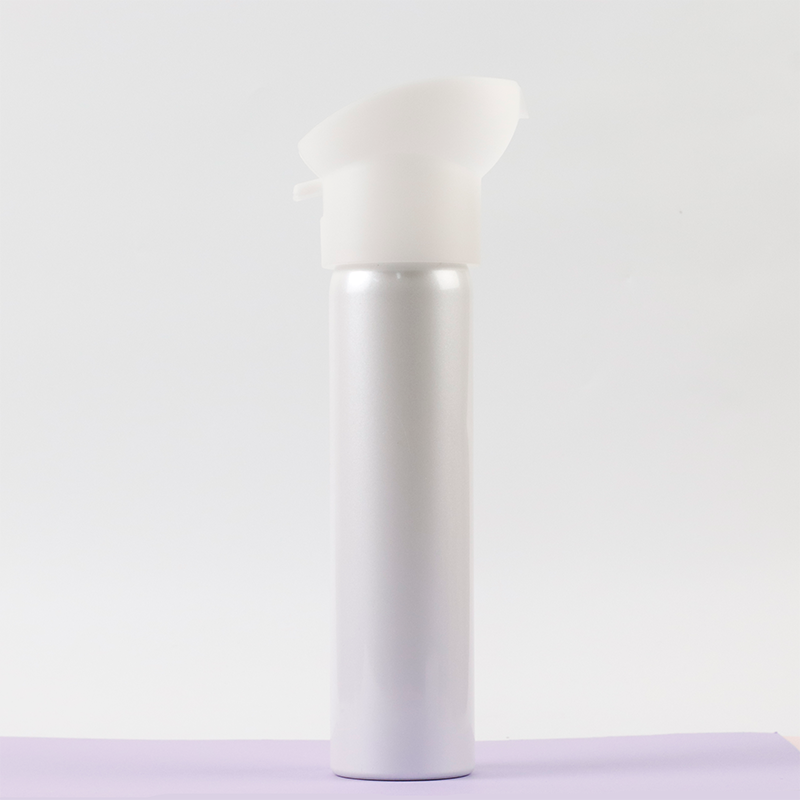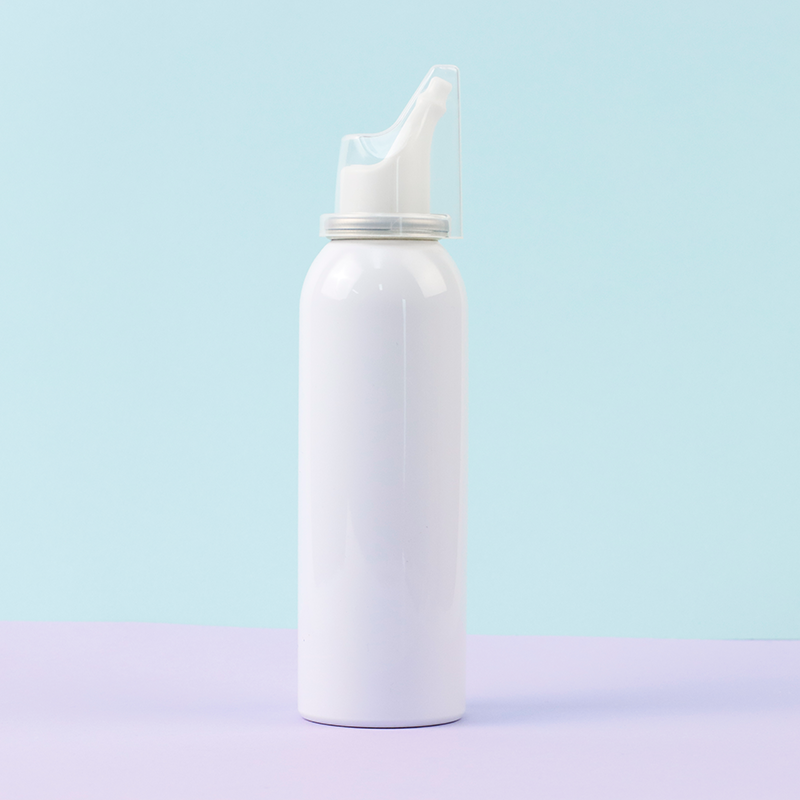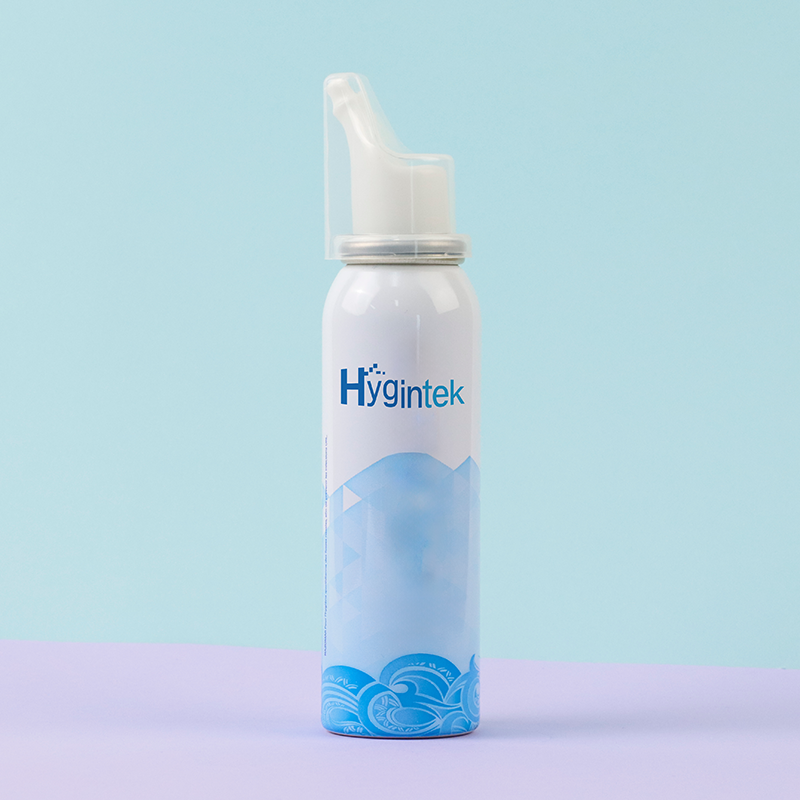Applications of aerosol cans: Pharmaceuticals field
Hygintek’s aluminum aerosol cans are widely used in the pharmaceutical field
Applications of aerosol cans: Pharmaceuticals field. An aerosol can is a device commonly used in medical and drug delivery.
Liquid medications are converted into fine particles through pumps and valves, which are inhaled into the respiratory tract through breathing. This conversion process is called atomization or spraying.
What is an aerosol can
An aerosol can is a bottle-shaped container containing liquid medication with an atomizer inside that converts the liquid medication into fine particles.
A complete medical aerosol can including can, valve, pump and lid. The currently commonly used materials for aerosol cans are aluminum and iron. The specific material chosen will depend on the object contained. There are three types of inner coating materials: golden epoxy phenolic, food-grade inner coating ppg-2845, and polyimide.
Aerosol cans are produced through automatic lines, so sealing and other effects will be better.

working principle
Nebulizer:
Aerosol cans usually come with a nebulizer, which is the key component that converts liquid medication into fine particles. A nebulizer usually consists of a small hole or nozzle that sprays liquid medication into very small droplets through the action of pressure.
Valves:
There are one-element valves and two-element valves. One-element and two-element valves are further divided into male valves and female valves. Male valves are more widely used. The valve is inside the tank, add a gasket and connect the nozzle. When the nozzle is pressed, fine particles are ejected. The valve should be a continuous valve, which can continuously spray out the medicine.
Droplet size control:
The inside of the atomizer is designed and operated to control the size of the droplets. Smaller droplets form finer particles more easily and provide better inhalation performance. This helps ensure that the drug reaches deeper into the respiratory tract, allowing it to be more effectively inhaled by the patient.
Atomization process:
When droplets are ejected from the atomizer, they come into contact with the surrounding air and gradually evaporate. This process causes the droplets to become smaller, forming fine particles. These fine particles are typically between 1 and 5 microns in diameter, making them ideal for inhalation into the respiratory tract through breathing.
Inhalation device:
Aerosol cans usually come with an inhalation device, such as a mask or inhaler, that the patient uses to inhale the drug particles into their airways. These devices help ensure that drugs reach target areas directly, such as the bronchi and lungs.




Advantages
- Drugs directly act on the respiratory tract: Fine particles can more easily enter the depths of the respiratory tract, allowing drugs to directly act on the site of the disease, providing faster and more effective treatment.
- Reduce drug dosage: Since the drug acts directly on the target area, compared with other delivery methods, the use of aerosol cans can reduce the overall dose of the drug and reduce the patient’s drug burden.
- Improved drug absorption: Through aerosolization, drug particles are better absorbed by the lungs, providing higher bioavailability and thereby increasing the efficacy of the drug.
Application
Bronchodilators:
Aerosol cans are widely used to provide bronchodilators to patients with respiratory conditions such as asthma and chronic obstructive pulmonary disease (COPD). These medications are sprayed through an aerosol can into tiny particles that are better able to reach deep into the respiratory tract, providing fast, effective relief and treatment.
Nebulization therapy:
Aerosol cans are also commonly used for nebulization therapy, which converts liquid medication into fine mist-like particles that the patient can inhale through breathing. This treatment method is commonly used to treat lung infections, bronchitis, cystic fibrosis and other diseases. It can act directly on the diseased site to provide rapid drug delivery and local treatment.
First Aid Medications:
Aerosol cans are also widely used for administering medications in emergency first aid situations. For example, first responders often carry aerosol cans of emergency medications, such as epinephrine or nitroglycerin, for use in emergencies such as heart attacks and asthma attacks.
About Us
Hygintek is a leading manufacturer of sustainable & ECO-friendly metal packages for food & beverage, medicine, and healthy brand, offering them a one-stop package solution and service.
CONTACT US
Recent Post
How to use it correctly
Read instructions carefully: Before use, carefully read the instructions provided by the manufacturer. Learn key information about proper use, medication dosage and frequency of use.
Wash your hands: Always wash your hands before using a medical aerosol can to ensure they are clean and avoid possible bacterial contamination.
Prepare Medications: Prepare the correct medications as directed by your doctor or medical professional. Make sure to use the correct medicine and the correct dosage.
Shake the aerosol can: Before use, gently shake the aerosol can a few times as directed in the instructions. This helps mix the medication evenly and ensures proper spraying of the medication.
Posture and Breathing: Proper posture and breathing are important when using an aerosol can. Choose an appropriate position (such as sitting or standing) and follow correct breathing patterns as recommended by your doctor or medical professional.
Use an inhalation device: Depending on the aerosol can, choose an appropriate inhalation device, such as a mask or inhaler. Make sure the inhalation device is installed and used correctly. If using a mask, make sure it fits your face well to avoid leakage of medicine.
To use the spray: Place your mouth or mouth of the inhaler around your lips, but do not bite down. When activating the nebulizer device, take a deep breath at the same time so that the drug particles can enter the respiratory tract.
Cleaning and Maintenance: Clean aerosol cans and inhalation devices regularly to avoid contamination and bacterial growth. Follow the instruction manual for proper cleaning and maintenance procedures.

